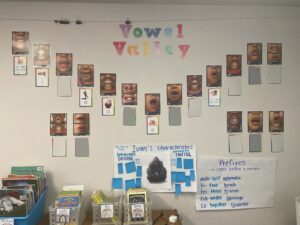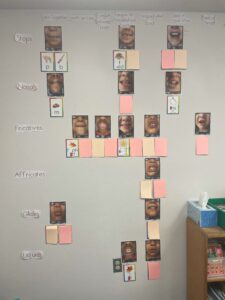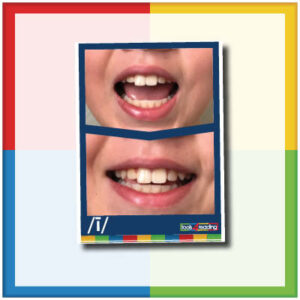One of the ways PNA is preparing students to be successful readers is by implementing a sound wall in each classroom. The Tools4Reading curriculum consists of several visual, auditory, and physical components to create a neural link between letters and their sounds.


Sound walls are unique because of the way they illustrate the connection between speech and print. The “Kid Lips” pictures emphasize articulatory gestures. These mouth movements become the talking piece that helps anchor each phoneme into memory. Students are encouraged to feel the way their mouth is moving and can even use mirrors to look at placements of their lips, teeth, and tongue.
Phoneme-Grapheme mini-cards are posted next to the Kid Lips pictures and include a keyword image to show how the phonemes (mouth movements) relate to graphemes (the letters in print). After the class explicitly learns and practices the sound, it is uncovered. In order to adhere to COVID restrictions, properly teaching students these articulations requires wearing masks with see-through windows.
Sound Wall Categories:
The consonants of the sound wall are broken into categories that help children remember what the sound should feel like.
Stops: sounds are made by completely blocking the flow of air and then releasing it.
Ex: P, T, and K
Nasals: produced by redirecting out air through the nose instead of allowing it to escape out of the mouth.
Ex: M & N
Fricatives: created by constricting the vocal tract, causing friction as the air passes through it.
Ex: V, F, and Z
Affricates: begin by fully stopping the air from leaving the vocal tract (similar to a stop sound), then releasing it through a constricted opening. (similar to a fricative sound).
Ex: Ch & J
Glides: sound glides into another phoneme, making it hard not to add the schwa onto the end: /yu/, /wu/
Ex: W
Liquids: tongue causes partial closure of the mouth. A push of air can cause liquid to move throughout the mouth.
Ex: L
If you’d like to learn more about how this program improves your child’s ability to spell click here: https://www.tools4reading.com/single-post/spelling-sound-walls-and-sound-chains-oh-my

Restrepo , C. (2021, March 15). Transitioning from word walls to sound walls. Reading Rockets. Retrieved September 25, 2021, from https://www.readingrockets.org/article/transitioning-word-walls-sound-walls.
